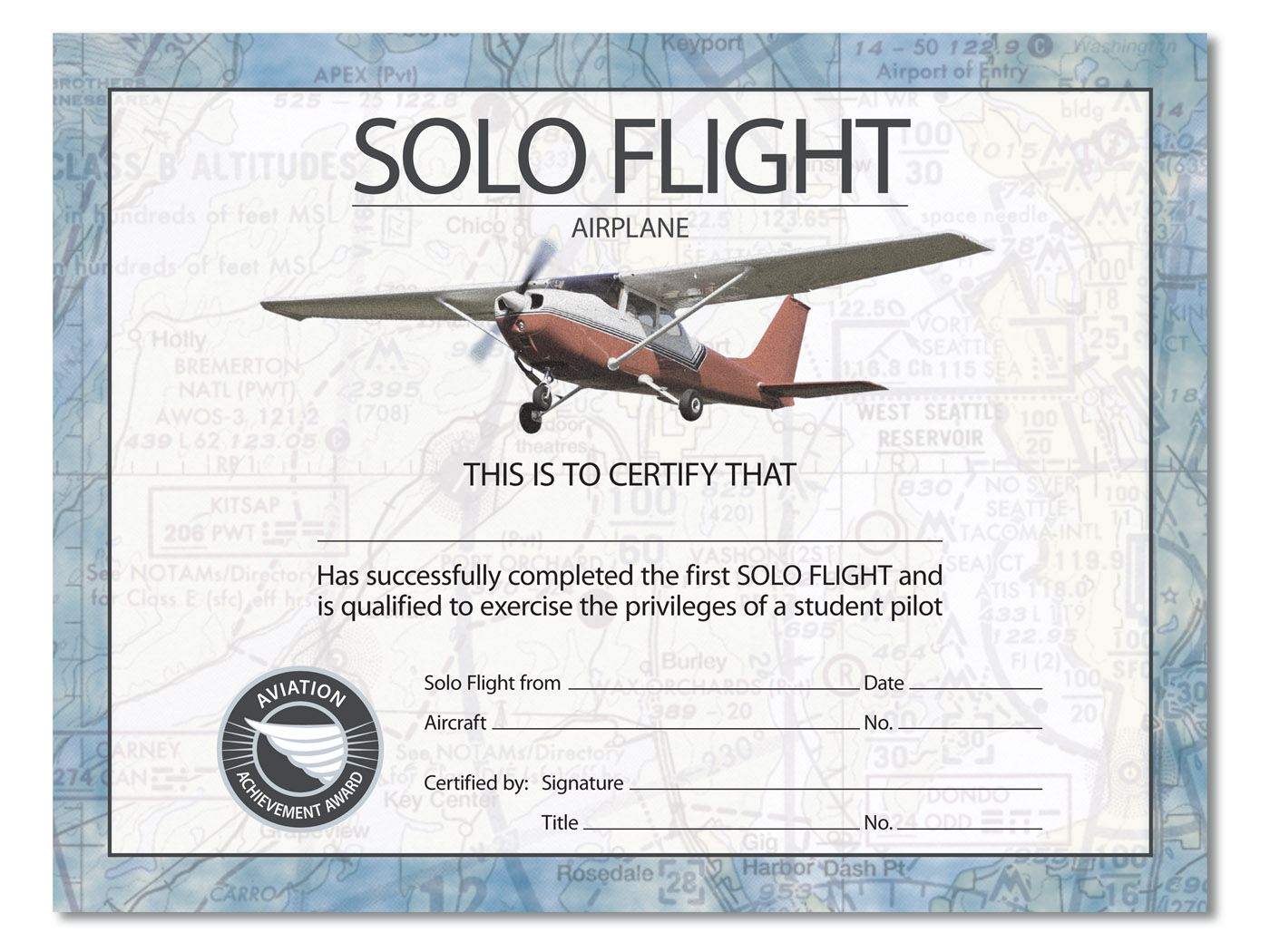In Monday’s post we were introduced to the student pilot’s first solo flight. Today, we will take a look a little more in depth to understand exactly what the instructor needs to do to prepare his or her student for solo flight. As a student, this will give you a behind the scenes look at the regulations in which a CFI needs to follow to prepare you the student for solo flight.
A student pilot may not operate an aircraft in solo flight unless the student pilot’s logbook has been endorsed for the specific make and model aircraft to be flown, and unless within the preceding 90 days his/her pilot logbook has been endorsed by an authorized flight instructor who has provided instruction in the make and model of aircraft in which the solo flight is made, and who finds that the applicant is competent to make a safe solo flight in that aircraft.
Prior to being authorized to conduct a solo flight, a student pilot must have received and logged instruction in the applicable maneuvers and procedures for the make and model of aircraft to be flown in solo flight, and must have demonstrated proficiency to an acceptable performance level as judged by the instructor who endorses the student’s pilot certificate. As appropriate to the aircraft to be flown in solo flight, the student pilot must have received presolo flight training in:
- Flight preparation procedures, including preflight inspections, powerplant operation, and aircraft systems.
- Taxiing or surface operations, including runups.
- Takeoffs and landings, including normal and crosswind.
- Straight-and-level flight and turns in both directions.
- Climbs and climbing turns.
- Airport traffic patterns, including entry and departure procedure, and collision, wind shear, and wake turbulence avoidance.
- Descents with and without turns, using high and low drag configurations.
- Flight at various airspeeds from cruise to slow flight.
- Stall entries from various flight attitudes and power combinations with recovery initiated at the first indication of a stall, and recovery from a full stall.
- Emergency procedures and equipment malfunctions.
- Ground reference maneuvers.
- Approaches to a landing area with simulated engine malfunctions.
- Slips to a landing.
- Go-arounds.
A student pilot may not operate an aircraft in a solo cross-country flight, nor may he/she, except in an emergency, make a solo flight landing at any point other than the airport of takeoff, until he/she meets the requirements prescribed in Part 61. However, an authorized flight instructor may allow a student to practice solo takeoffs and landings at another airport within 25 NM from the airport at which the student receives instruction, if the instructor finds the student competent to make those landings and takeoffs, and the flight training specific to the destination airport (including the route to and from, takeoffs and landings, and traffic pattern entry and exit) has taken place. Also, the instructor must have flown with that student prior to authorizing those takeoffs and landings, and endorsed the student pilot’s logbook accordingly.
The term cross-country flight means a flight beyond a radius of 25 nautical miles from the point of takeoff. A flight instructor must endorse a student pilot’s logbook for solo cross-country flights. There are three types of these endorsements:
- An endorsement in the student pilot’s logbook that the instructor has reviewed the preflight planning and preparation for each solo cross-country flight, and the pilot is prepared to make the flight safely under the known circumstances and the conditions listed by the instructor in the logbook.
- The instructor may also endorse the logbook for repeated solo cross-country flights under stipulated conditions over a course of not more than 50 nautical miles from the point of departure if he/she has given the student flight instruction in both directions over the route, including takeoffs and landings at the airports to be used.
- The student pilot certificate must be endorsed for cross-country operations.
Hopefully the information above gives you a general idea of what needs to be accomplished prior to your instructor allowing you to conduct solo flight, whether it be your first solo in the traffic pattern or a more extensive solo cross country flight to the next town over.





